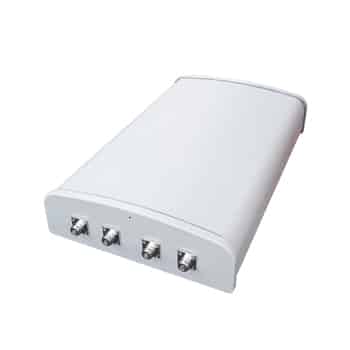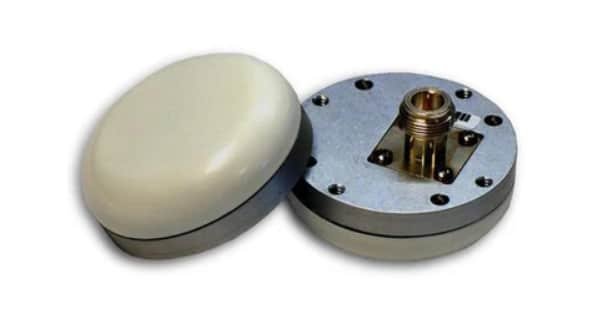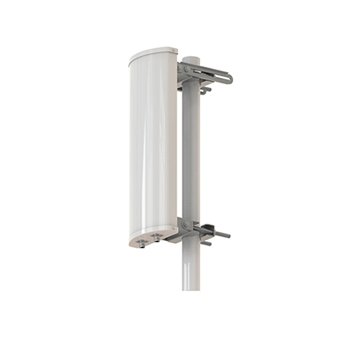
Magnetic mount antennas offer a practical, flexible solution for many radio and signal applications. These antennas are important because they can securely attach to metallic surfaces via a magnetic base, making them ideal for those needing easy installation, quick adjustments, and removal without any permanent modifications to the surface. These antennas are perfect for vehicles, temporary setups, or experimental uses, and these antennas have become popular among users of CB (Citizen Band) radios, VHF, UHF systems, and beyond.
In this article, we will discuss the workings of magnetic mount antennas, the different types available, their benefits, and practical applications.
Table of Contents
ToggleBasic Components of Magnetic Mount Antennas
Magnetic mount antennas have three main components. Let’s go through each of them in detail,
- Antenna Element: The antenna element is the core of any antenna system. It determines the type of frequency bands it can receive or transmit, based on its length and design. Antenna elements in magnetic mounts are usually flexible enough to adjust to a user’s needs, whether for CB radio, VHF, or UHF frequencies.
- Magnetic Base: This component provides the unique advantage of magnetic mount antennas. Using a strong magnet, the base can securely attach to any ferromagnetic surface, such as the body of a car, truck, or metal rooftop. This temporary yet stable connection ensures that the antenna stays strong even during movement, wind, or mild impacts.
- Coaxial Cable: A coaxial cable connects the antenna to the signal device. It’s designed to maintain signal integrity across its length, minimizing signal loss and interference. This component often includes a connector, which can vary depending on the device, allowing smooth communication between the antenna and the device.
How Magnetic Base Antennas Work
Magnetic base antennas function based on the principles of magnetic adhesion and signal transmission. Let’s discuss these processes in detail,
- Magnetic Adhesion to Metallic Surfaces: The magnetic base of the antenna employs ferromagnetism to adhere securely to metallic surfaces. This magnetic pull is created by placing a strong magnet within the base, allowing the antenna to remain in place even under challenging conditions, such as vehicle vibrations, wind, and sudden movements. This feature is particularly advantageous for mobile setups, because it ensures the antenna’s stability and positioning despite the constant motion. This attachment also makes it convenient for temporary installations, as the magnetic base can be placed and removed easily without damaging the surface.
- Transmission and Reception of Signals: Magnetic base antennas operate by capturing and sending radio frequency (RF) signals. Here’s a breakdown of the process,
- Signal Reception: The antenna element is designed to capture incoming RF signals from the surrounding environment. These RF waves induce an electrical signal within the antenna element, which is then transferred through the coaxial cable to the connected radio or device.
- Signal Transmission: For outgoing communication, the device generates electrical signals that travel through the coaxial cable to the antenna. The antenna then converts these electrical signals into RF waves and transmits them into the surrounding environment. This dual functionality of receiving and transmitting enables two-way communication in radios and other devices.
Common Types of Magnetic Mount Antennas
Magnetic mount antennas come in various types, each made for specific applications and frequency ranges. Here’s an in-depth look at some popular types of magnetic mount antennas, highlighting their unique features and uses,
Magnetic Mount CB Antenna
Primarily used for Citizen Band (CB) radio, these antennas operate on the 27 MHz frequency range. They are widely favored by truckers, off-road enthusiasts, and rural commuters due to their ability to provide clear, reliable communication over medium distances. CB antennas are an excellent choice for those seeking communication without reliance on cellular networks, mainly in areas with less coverage. Magnetic mount CB antennas offer the advantage of easy installation on vehicles, enabling flexible, on-the-go communication.
Magnetic Mount VHF Antenna
These antennas are designed to work within the Very High Frequency (VHF) range, typically between 30 MHz and 300 MHz, which makes them highly effective for applications requiring long-range line-of-sight communication. Commonly used in marine and aviation sectors, VHF magnetic mount antennas enable robust communication over long distances, particularly in open environments. Their ability to work effectively on water or in high-altitude environments makes them ideal for boats, airplanes, and rescue operations.
Magnetic Mount UHF Antenna
Ultra High Frequency (UHF) magnetic mount antennas operate in the range of 300 MHz to 3 GHz, making them suitable for communication in urban areas where signal penetration is important. UHF antennas are good at overcoming obstacles like buildings and dense structures, making them highly effective for city-based applications. These antennas are popular in professional settings, including public safety, broadcasting, and security, where stable communication is important.
VHF/UHF Dual-Band Mag-Mount Antenna
Offering dual-band functionality, these antennas combine VHF and UHF capabilities into a single unit, allowing users to switch between the two frequency bands. This makes dual-band antennas versatile, mainly for users who need to communicate over various distances and environments. Emergency services, search and rescue operations, and amateur radio operators often rely on dual-band magnetic mount antennas.
GMRS Magnetic Mount Antenna
These antennas are specifically tuned for the General Mobile Radio Service (GMRS), GMRS antennas operate on UHF frequencies around 462 MHz, ideal for short-range communication within a group. These antennas are widely used by families, neighborhood groups, and campers who need reliable, direct communication without cellular coverage.
Each of these magnetic mount antennas serves a unique purpose, helping a range of users from professional operators to hobbyists. Magnetic mounts allow these antennas to be installed and removed quickly, making them perfect for temporary setups and mobile applications.
Advantages and Disadvantages of Magnetic Mount Antennas
Magnetic mount antennas offer unique benefits and drawbacks, making them suitable for a variety of applications. Let’s look into the detailed advantages and disadvantages of these antennas,
Advantages
- Flexible Installation: One of the most significant benefits of magnetic mount antennas is their flexibility and ease of installation. Unlike permanently mounted antennas that require holes to be drilled on specific surfaces, magnetic mounts can be set up quickly by simply placing them on a metallic surface. This quick installation is ideal for those needing a temporary setup where the antenna might be moved frequently. This can be beneficial in situations where testing signal strength in different locations is necessary, as users can adjust the position easily to achieve optimal performance.
- Versatile Applications: Magnetic mount antennas can be fixed to any metallic surface, whether that’s the roof of a car, a metal pole, a metal-framed building, or even an outdoor railing. This versatility opens up numerous application possibilities across a range of environments and vehicles.
- No Permanent Modifications for surfaces: Because they rely on a magnetic base rather than screws or bolts, magnetic mount antennas preserve the integrity of the surface they’re mounted on. This is a big advantage for those who want to avoid drilling holes or making permanent modifications to their property, vehicle, or rented space.
Disadvantages
- Limited to Metallic Surfaces: Magnetic mount antennas require a metal surface to adhere, which limits their application in environments where metallic surfaces are unavailable.
- Potential for Slippage: Although magnetic mount antennas are designed for stable adhesion, they may face challenges under certain conditions, like very high speeds, strong winds, or rugged terrains.
- Susceptible to Theft: Because magnetic mount antennas are easily removable, they are more prone to theft compared to antennas that are permanently installed with screws or bolts. In unsecured or high-traffic locations, the ease of removing a magnetic mount antenna could pose a security risk.
Applications in Communication
Magnetic mount antennas are favored in a wide range of communication applications because of their easy installation, flexibility, and versatility. Let’s look at some specific fields where magnetic mount antennas play an essential role,
- Mobile Communication: For individuals in the trucking and off-roading communities, magnetic mount CB and GMRS antennas provide a convenient and reliable solution for maintaining communication on the road. Truck drivers, in particular, use CB radios to stay connected with other drivers, alert each other to road conditions, and communicate important information.
- Emergency Services: Magnetic mount antennas play a crucial role in emergency services, mainly dual-band VHF/UHF antennas, which allow for communication across multiple frequency bands. Search and rescue teams and law enforcement agencies can quickly deploy these antennas on their vehicles or portable command centers, enabling efficient communication during critical operations.
- Amateur Radio: Hobbyists and ham radio operators use the versatility of magnetic mount antennas, which allow them to set up communication systems on a wide variety of vehicles and environments.
- Maritime Communication: In marine environments, VHF magnetic mount antennas are popular among boat operators who need reliable communication while navigating in the sea. The magnetic mount allows these antennas to attach firmly to metal parts of the boat, providing a stable platform for signal transmission and reception.
Why Choose Magnetic Antenna Mounts?
Magnetic mount antennas are ideal for users who prioritize ease of installation, flexibility, and adaptability. For truckers, off-road adventurers, and radio operators, magnetic mounts provide a convenient solution for quickly setting up and removing antennas as needed. Whether heavy-duty, low-profile, or equipped with triple magnets, these mounts offer various designs to accommodate different usage scenarios. This versatility enables you to choose a magnetic mount that best meets your requirements for a secure attachment and convenient removal.
Does a Magnetic Mount Antenna Need to Be Grounded?
While magnetic mount antennas don’t typically need a dedicated grounding wire, they do benefit from the grounding effect of the metal surface they attach to, particularly in vehicles where the metal body acts as a natural ground plane. The contact with the metal surface provides a grounded base that helps stabilize the signal and improve overall performance. However, for applications requiring optimal performance, a dedicated grounding setup may further enhance signal strength and reduce potential interference.
Comparing Magnetic Mount to Other Antenna Types
Magnetic mount antennas offer distinct advantages when compared to other types of mounts, such as permanent installations and suction cup mounts,
- Permanent Installations: Permanent mounts provide the most stable attachment but require drilling holes or making permanent modifications to the surface, which is not always desirable. Magnetic mounts eliminate the need for such modifications, making them a more attractive option for users who prefer non-invasive installation methods. This is particularly advantageous for rented vehicles where preserving the original condition is essential.
- Suction Cup Mounts: Magnetic mounts generally offer better adhesion and stability than suction cup mounts, which may lose their grip over time or under changing environmental conditions. Suction cups can weaken in extreme weather conditions or when using a long time, leading to potential dislodging. Magnetic mounts are more reliable in maintaining a secure attachment, mainly in portable applications where stability is key.
What Is a Magnetic Mount CB Antenna Used For?
A magnetic mount CB antenna is specifically designed for the CB radio frequency, enabling long-distance communication without depending on cellular networks. It’s widely used in trucking, where drivers communicate road conditions, hazards, and other vital information. This antenna type is also common in rural environments where cellular coverage is minimal.
Installation Tips for Magnetic Mount Antennas
- Choose a Stable Surface: Place the antenna on a clean, flat surface to maximize magnetic adhesion and ensure reliable performance.
- Position for Optimal Signal: If you can place the antenna at the highest point on a vehicle or building, away from interference sources, it gives the best signal reception.
- Use a Protective Pad: If you are worried about scratches, consider placing a soft pad between the magnet and the surface.
- Check for Interference: Metal objects, electronic devices, or obstructions near the antenna can affect signal quality. Test different placements to minimize interference.
Conclusion
Magnetic mount antennas present an effective and flexible solution for a range of communication needs. With easy installation, adaptability to metallic surfaces, and suitability across various environments, they are a top choice for users needing a temporary, non-invasive antenna setup. Whether for mobile CB radio, marine VHF communication, or dual-band amateur use, magnetic mount antennas provide a combination of convenience, reliability, and performance.








